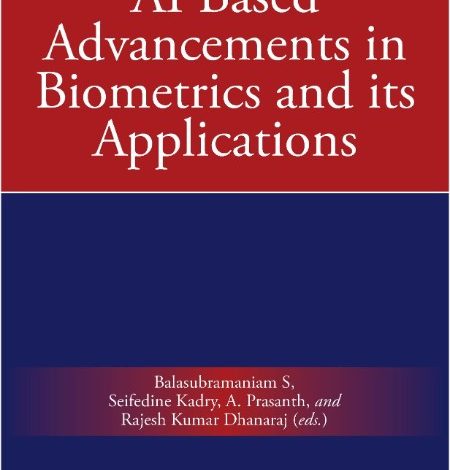Ebooks
Balasubramaniam S AI Based Advancements in Biometrics and its Applications 2025


Balasubramaniam S AI Based Advancements in Biometrics and its Applications 2025 | 16.04 MB
Title: AI Based Advancements in Biometrics and its Applications
Author: Balasubramaniam S
Description:
Biometrics are a person’s unique physical or behavioural features that can be utilised for electronic identification and authentication. Fingerprints, facial features, voice patterns, and typing speed are all examples of biometric identifiers. Each of these identities stands on its own as a distinct marker of a certain person, and they can be used in tandem to improve identification reliability. Biometrics are finding more and more uses across various industries today.
The field of AI-based biometrics is expanding quickly, with the goal of making biometric identification systems more reliable, efficient, and secure. There are many ways in which artificial intelligence can be applied to enhance biometric systems such as enhancing precision, accelerating performance, and fortifying safety. Access control, financial transactions, logistics, and medical care are just some of the current uses for biometrics powered by artificial intelligence.
As this technology matures and decreases in price, it is anticipated that biometrics based on artificial intelligence will see increased use in the coming years. The use of artificial intelligence in biometrics could completely alter how we establish our identities and communicate with the outside world.
The use of artificial intelligence in biometrics is an exciting new development with the promise to boost the reliability, speed, and safety of biometric authentication methods. Artificial intelligence (AI) based biometrics is predicted to become more widely employed in a number of applications as the technology continues to improve and become more affordable. Some concrete applications of AI in biometrics are Facial Recognition, Finger Print Recognition and Voice Recognition.
This book delves into the history of biometrics, the various systems that have been developed to date, the problems that have arisen from these systems, the necessity of AI-based biometrics systems, the various AI techniques that have been developed to date (including machine learning, deep learning, natural language processing, and pattern recognition), their potential uses and applications, security and privacy issues in AI-based Biometric systems, current trends in AI-based biometrics, and various case studies of AI-based biometrics.
Biometrics are a person’s unique physical or behavioural features that can be utilised for electronic identification and authentication. Fingerprints, facial features, voice patterns, and typing speed are all examples of biometric identifiers. Each of these identities stands on its own as a distinct marker of a certain person, and they can be used in tandem to improve identification reliability. Biometrics are finding more and more uses across various industries today.
The field of AI-based biometrics is expanding quickly, with the goal of making biometric identification systems more reliable, efficient, and secure. There are many ways in which artificial intelligence can be applied to enhance biometric systems such as enhancing precision, accelerating performance, and fortifying safety. Access control, financial transactions, logistics, and medical care are just some of the current uses for biometrics powered by artificial intelligence.
As this technology matures and decreases in price, it is anticipated that biometrics based on artificial intelligence will see increased use in the coming years. The use of artificial intelligence in biometrics could completely alter how we establish our identities and communicate with the outside world.
The use of artificial intelligence in biometrics is an exciting new development with the promise to boost the reliability, speed, and safety of biometric authentication methods. Artificial intelligence (AI) based biometrics is predicted to become more widely employed in a number of applications as the technology continues to improve and become more affordable. Some concrete applications of AI in biometrics are Facial Recognition, Finger Print Recognition and Voice Recognition.
This book delves into the history of biometrics, the various systems that have been developed to date, the problems that have arisen from these systems, the necessity of AI-based biometrics systems, the various AI techniques that have been developed to date (including machine learning, deep learning, natural language processing, and pattern recognition), their potential uses and applications, security and privacy issues in AI-based Biometric systems, current trends in AI-based biometrics, and various case studies of AI-based biometrics.
DOWNLOAD:




